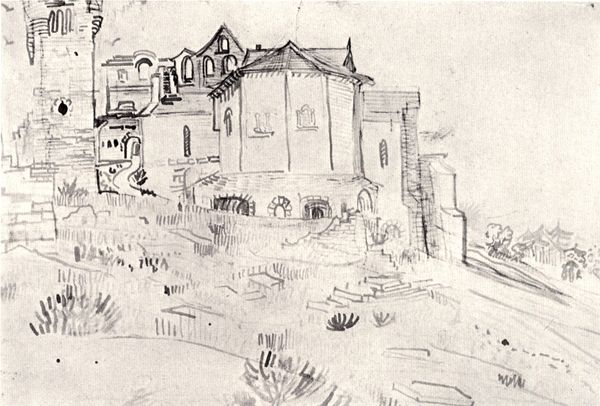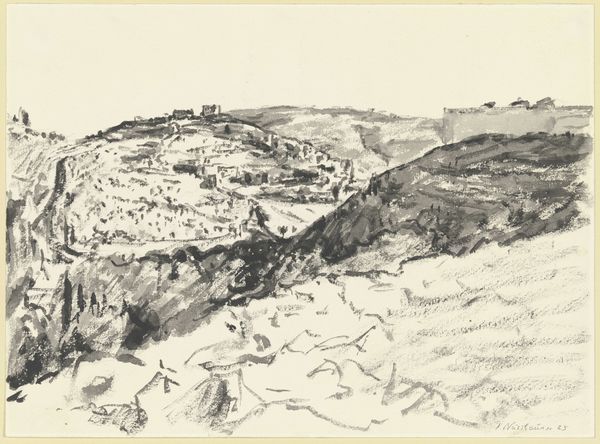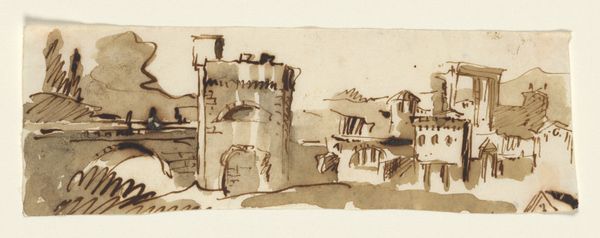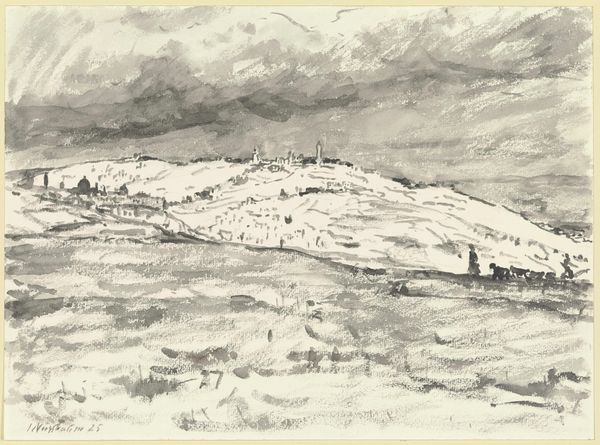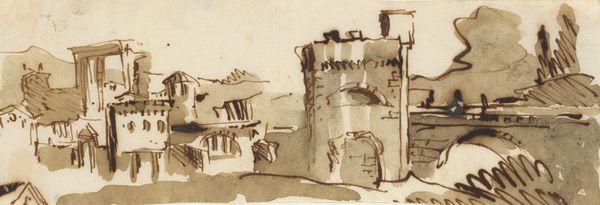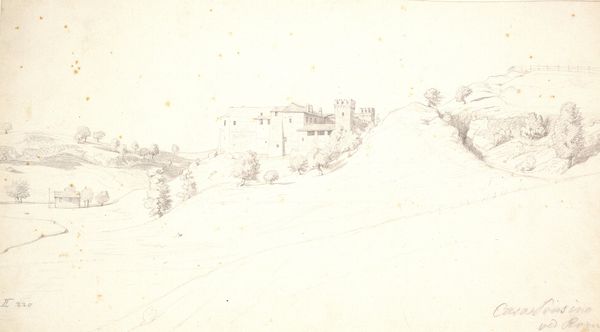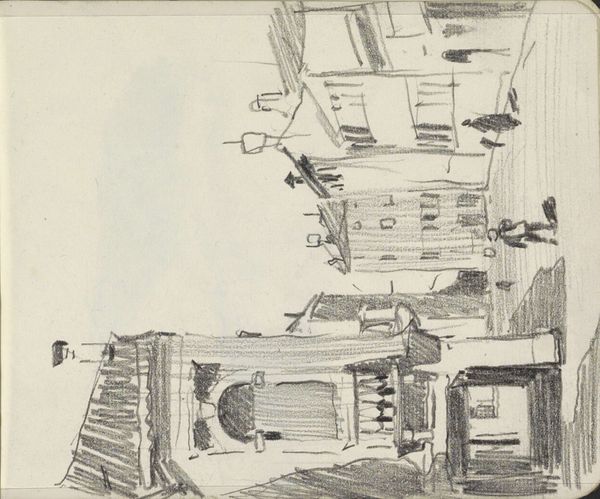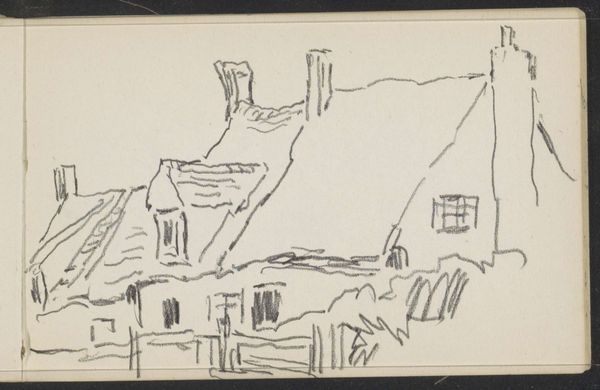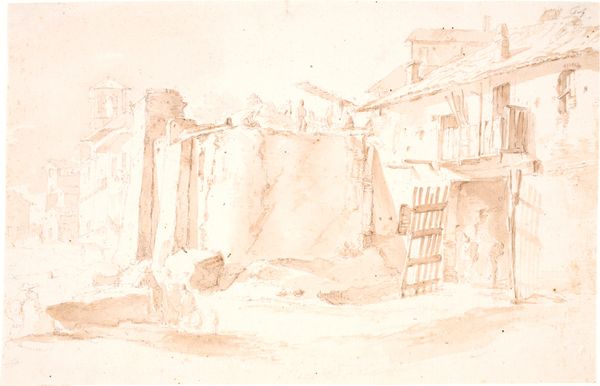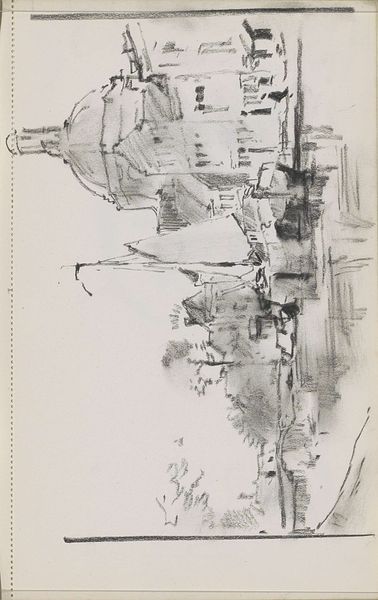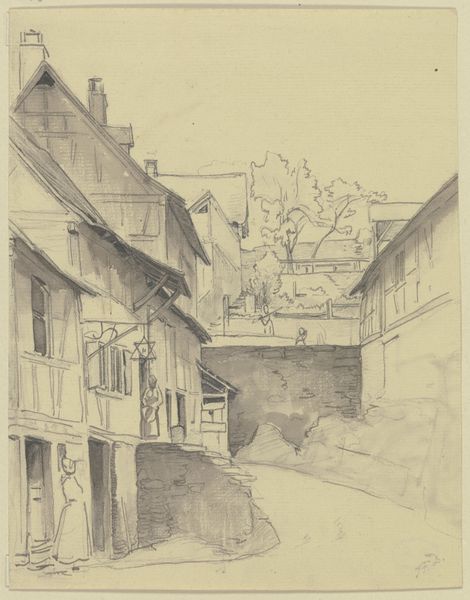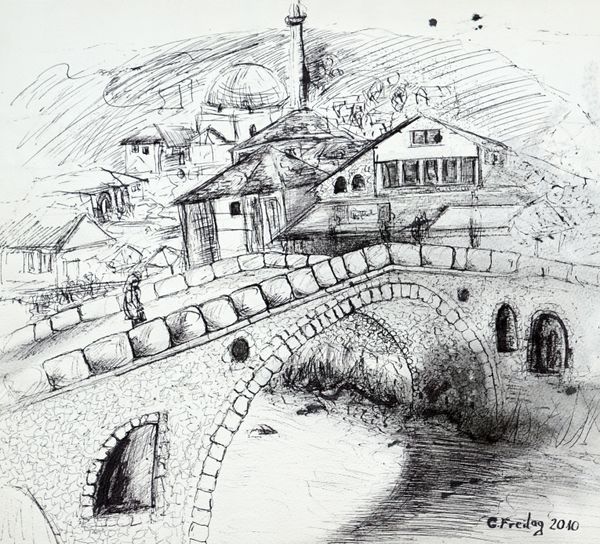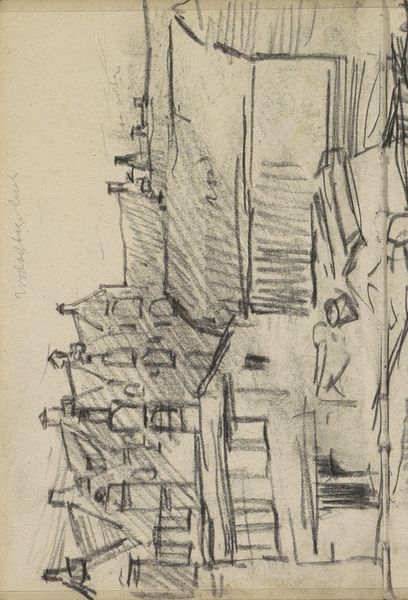
View of the Caelian Hill, Rome, with the church of Santi Giovanni e Paolo, seen from the Aventine, Rome c. 1750
0:00
0:00
drawing, ink, pencil
#
drawing
#
landscape
#
ink
#
pencil
#
cityscape
Copyright: Public Domain: Artvee
Claude-Joseph Vernet rendered this view of the Caelian Hill in Rome with ink and wash. Vernet, a French painter, was one of many artists drawn to Italy, and Rome in particular, during the 18th century. This drawing shows a picturesque view of Rome, emphasizing its historical depth through the layering of different eras of architecture. Vernet highlights the way the city's present is built upon its antique past. The church of Santi Giovanni e Paolo is visible, marking the continued importance of religion in the city. But look closer, and you'll see Roman ruins incorporated into the urban fabric, a reminder of the city's ancient imperial history. The Aventine Hill provides a vantage point, and the city sprawls out before us, hinting at the complex social and political life within. Historians use drawings like this, along with maps and written accounts, to reconstruct the experience of Rome during this period. Vernet’s image invites us to consider the city not just as a place, but as a living embodiment of history.
Comments
No comments
Be the first to comment and join the conversation on the ultimate creative platform.
